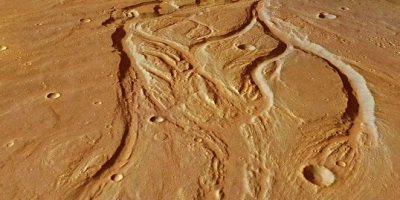
When scientists started looking closely at the photographs of Martian channels, they saw that the channel layouts showed certain unique characteristics that said a lot about how liquid water used to flow through the channels. These landmasses are called “flow features.” They give scientists critical information about how and when the channels were created and shaped. Some of them are streamlined islands (landmasses in the shape of tear drops formed when large rocks or craters with ejecta around them stand in the way of floods), terraces on the sides of the channel, smaller grooves formed within the channel bed, dry waterfalls (ledges within the channel that are also called cataracts), meanders (winding curves), and deltas – features very similar to those found on the Earth’s river beds too!
Martian channels are divided into three – outflow channels, valley networks and gullies – based on their dimensions, and the flow features found in them. Mars also has lava channels created by the flow of, you guessed it, lava!
Even though they may have many characteristics in common with the water-made channels, they are not put under the same group because of the obvious differences in the way they were created. Of the three Martian channels, outflow channels are the biggest and the widest, and gullies are the smallest.
Picture Credit : Google




